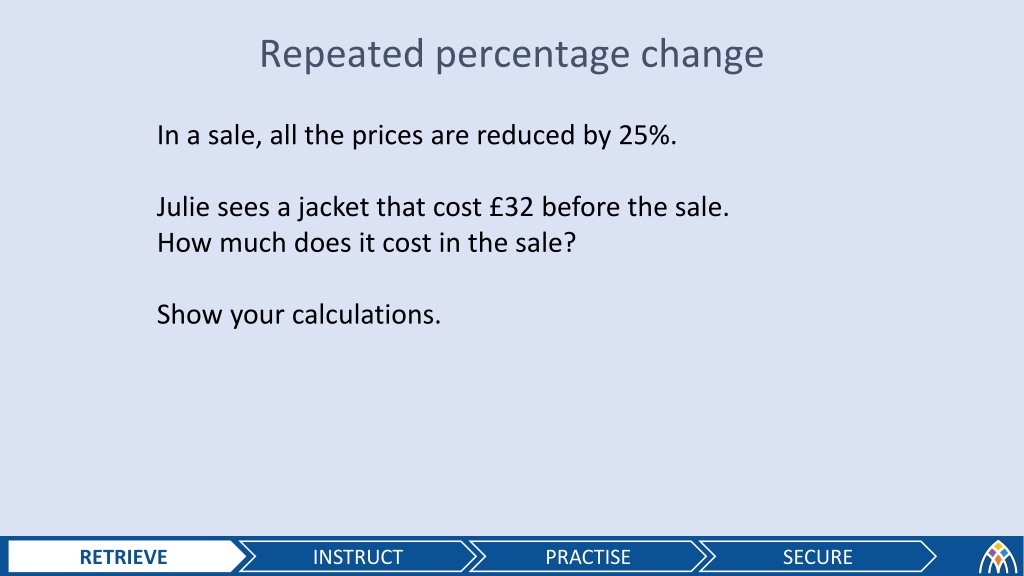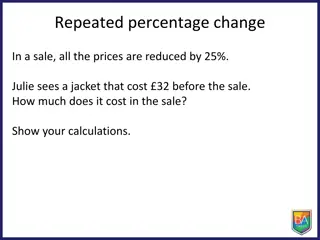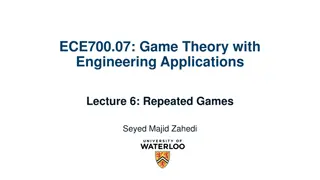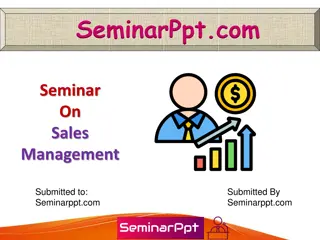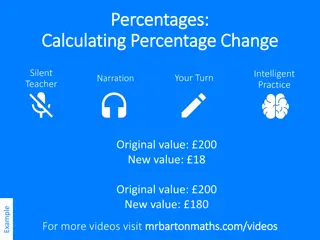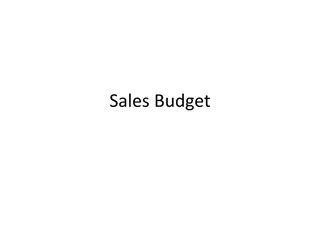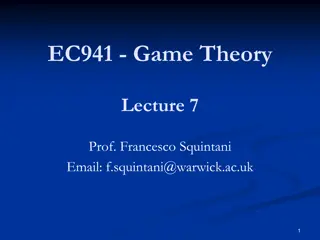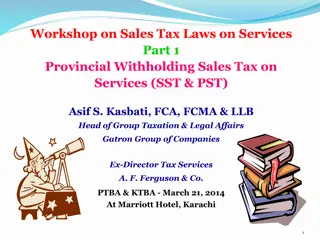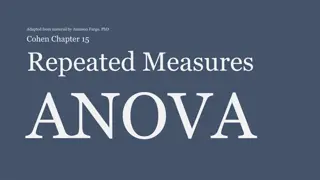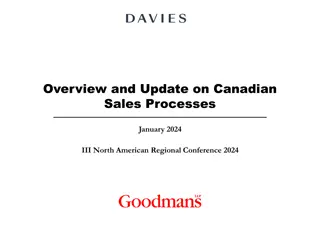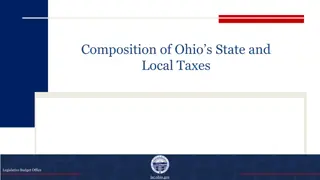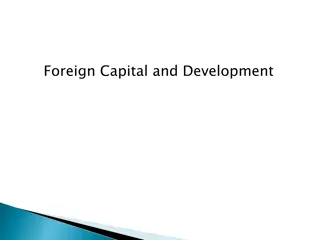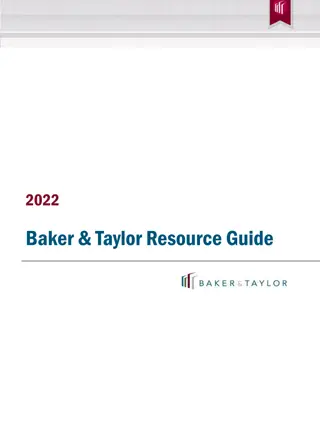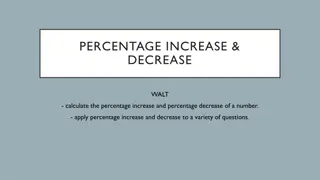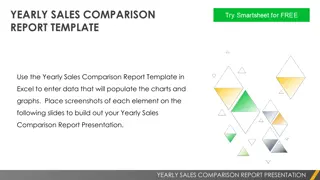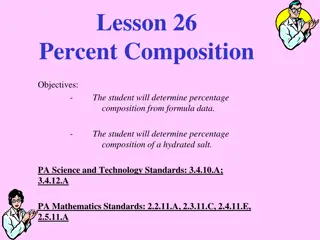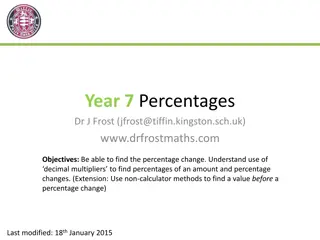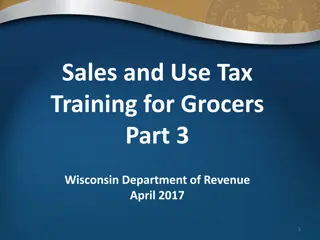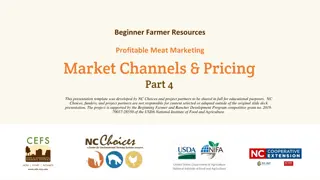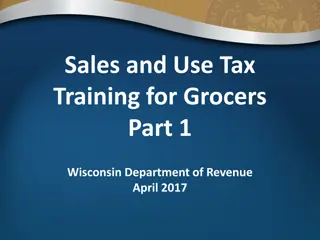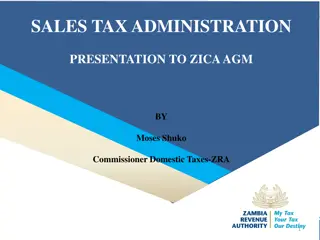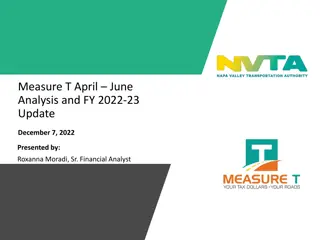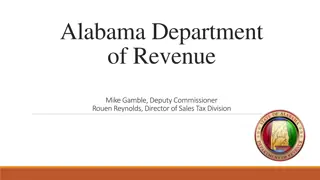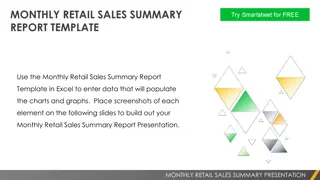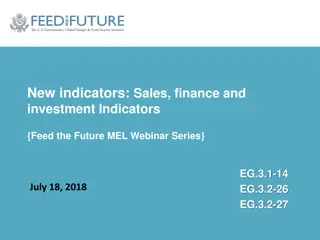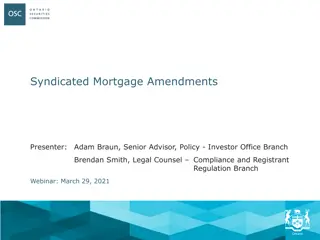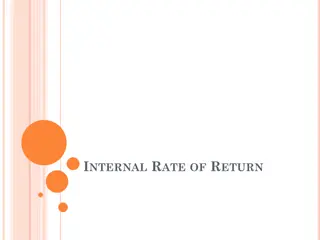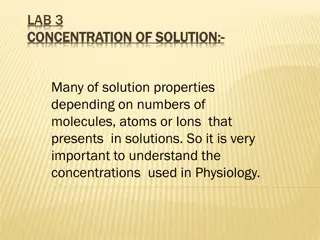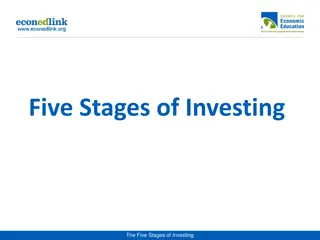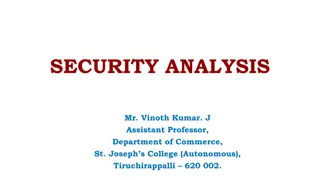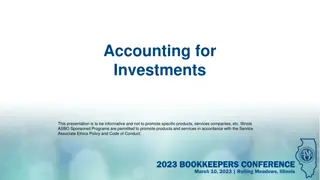Understanding Repeated Percentage Changes in Sales and Investments
This content covers examples and calculations related to repeated percentage changes in sales and compound interest investments. It explains how prices are affected when all items are reduced by a certain percentage in sales, as well as scenarios involving compound interest investments over multiple years. The examples provide insights into how to calculate final values after consecutive percentage changes and compound interest growth.
Download Presentation

Please find below an Image/Link to download the presentation.
The content on the website is provided AS IS for your information and personal use only. It may not be sold, licensed, or shared on other websites without obtaining consent from the author. Download presentation by click this link. If you encounter any issues during the download, it is possible that the publisher has removed the file from their server.
E N D
Presentation Transcript
Repeated percentage change In a sale, all the prices are reduced by 25%. Julie sees a jacket that cost 32 before the sale. How much does it cost in the sale? Show your calculations. RETRIEVE INSTRUCT PRACTISE SECURE
Repeated percentage change In the second week of the sale, the prices are reduced by 25% of the previous week s price. In the third week of the sale, the prices are again reduced by 25% of the previous week s price. In the fourth week of the sale, the prices are again reduced by 25% of the previous week s price. Julie thinks this will mean that the prices will be reduced to 0 after the four reductions because 4 x 25% = 100%. Explain why Julie is wrong. RETRIEVE INSTRUCT PRACTISE SECURE
EVERY CHILD A READER Repeated percentage change RETRIEVE If Julie is able to buy her jacket after the four reductions, how much will she have to pay? DECODE CONNECT VISUALISE SUMMARISE INFER PREDICT EXAMINE RETRIEVE INSTRUCT PRACTISE SECURE
EVERY CHILD A READER Compound Interest Compound Interest RETRIEVE 4000 is invested at 3% per annum compound interest. Find the total value of the investment after 2 years. DECODE CONNECT Multiplier Increase: 100% + 3% = 103% 103 100 = 1.03 VISUALISE Year Initial Value at end of year SUMMARISE 1 2 ?,??? ?,??? 4000 1.03 = ?,??? INFER 4120 1.03 = ?,???.?? PREDICT EXAMINE RETRIEVE INSTRUCT PRACTISE SECURE
EVERY CHILD A READER Example 2 Example 2 RETRIEVE A man invests 5,000 into a company and expects to make 5% per annum. How much will his investment be worth in three years? DECODE CONNECT Multiplier Increase: 100% + 5 = 105% 105 100 = 1.05 VISUALISE Year Initial 5,000 5,250 Value at end of year SUMMARISE 1 2 3 5000 1.05 = 5,250 5250 1.05 = 5,512.50 INFER PREDICT 5,512.50 5512.50 1.05 5,788.13 EXAMINE RETRIEVE INSTRUCT PRACTISE SECURE
EVERY CHILD A READER Example 3 RETRIEVE 14,000 is invested at 7.5% per annum compound interest. Find the total amount at the end of three years. DECODE CONNECT Multiplier Increase: 100% + 7.5% = 107.5% 107.5 100 = 1.075 VISUALISE Year Initial 14,000 15,050 Value at end of year SUMMARISE 1 2 3 14000 1.075 = 15,050 INFER 15050 1.075 = 16,178.75 PREDICT 16,178.75 16178.75 1.075 17,392.16 EXAMINE RETRIEVE INSTRUCT PRACTISE SECURE
EVERY CHILD A READER Compound Interest Compound Interest RETRIEVE DECODE 4000 is invested at 3% per annum compound interest. Find the total value of the investment after 20 years. CONNECT Multiplier Increase: 100 + 3 = 103% 103 100 = 1.03 VISUALISE Year Initial Value at end of year SUMMARISE 1 2 ?,??? ?,??? 4000 1.03 = ?,??? INFER 4120 1.03 = ?,???.?? PREDICT This method would be very time consuming for this question! EXAMINE RETRIEVE INSTRUCT PRACTISE SECURE
EVERY CHILD A READER Compound Interest Compound Interest RETRIEVE DECODE 4000 is invested at 3% per annum compound interest. Find the total value of the investment after 20 years. CONNECT Multiplier Increase: 100 + 3 = 103% 103 100 = 1.03 VISUALISE SUMMARISE (4000 1.03) 1.03 1.03 1.03 1.03 1.03 1.03 INFER = 4000 1.0320 PREDICT EXAMINE This calculation is more efficient. RETRIEVE INSTRUCT PRACTISE SECURE
Using boxes Number of years X1.05 8 200 Percentage increase or decrease Initial amount
Mark deposited 230 in a bank. He earned 7% compound interest every year. How much was in the account after 4 years? Multiplier: = 100% + 7% = 1.0 + 0.07 = 1.07 230 1.074 = 301.48 RETRIEVE INSTRUCT PRACTISE SECURE
Anna deposited 250 in a bank. She earned 3.5% compound interest every year. How much was in the account after 5 years? Multiplier: = 100% + 3.5% = 1.0 + 0.035 = 1.035 250 1.0355 = 296.92 RETRIEVE INSTRUCT PRACTISE SECURE
Marge invested 180 in a company. Her investment depreciates 11% every year! How much was the investment worth after 5 years? Multiplier: = 100% 11% = 1.0 0.11 = 0.89 180 0.895 = 100.51 RETRIEVE INSTRUCT PRACTISE SECURE
Tony invested 220 in a company. He lost 3% every year! How much was the investment worth after 3 years? Multiplier: = 100% 3% = 1.0 0.03 = 0.97 220 0.973 = 200.79 RETRIEVE INSTRUCT PRACTISE SECURE
EVERY CHILD A READER RETRIEVE DECODE CONNECT VISUALISE SUMMARISE INFER PREDICT EXAMINE RETRIEVE INSTRUCT PRACTISE SECURE
EVERY CHILD A READER Check your work RETRIEVE DECODE CONNECT VISUALISE SUMMARISE INFER PREDICT EXAMINE RETRIEVE INSTRUCT PRACTISE SECURE
Repeated Percentage Change 1. Craig puts 240 into a savings account. Each year the savings earn interest at 6% of the amount at the start of the year. What will his savings be worth after 3 years? Give your answer to the nearest penny. 2. Each year a car loses value by 11% of its value at the start of the year. If it was worth 8000 when it was new, what will it be worth after 2 years? 3. A population of bacteria is estimated to increase by 12% every 24 hours. T The population was 2000 at midnight on Friday. What was the population (to the nearest whole number) by midnight the following Wednesday?
Repeated Percentage Change Challenge A washing machine is reduced by 20% in the first week of the sale and then reduced by a further 25% in the second week. What is the total percentage reduction? How did you work it out? Clue: What are the multipliers? What happens if you combine them?
